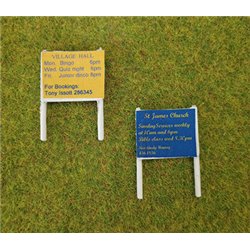Static grass puffer bottles work by manually charging model grass fibres with static electricity. When the charged...
No products
Product successfully added to your shopping cart
There are 0 items in your cart. There is 1 item in your cart.
Search Tips
How do I use timetables for operating sessions on model railways?
For many model railway enthusiasts, there is a desire to not just recreate static scenes, but to emulate the operational essence of their prototype inspirations. While casual running of trains is enjoyable, incorporating realistic timetables into your operating sessions can bring a whole new level of challenge and authenticity.
In the real world, timetables provide the cadence for freight and passenger operations. They govern the schedules for pick-ups, set-outs, meets between opposing trains, and arrivals/departures at stations and terminals. Having a prototype timetable as the basis for your operating scheme enforces discipline, coordination, and prioritisation - just as real crews must follow.
The first step is to obtain an actual timetable from the railway company, region, and era you are modelling. Many historical timetables are available online through railfan associations or library archives. For a contemporary layout, you may be able to obtain the general schedules and train symbols used by your prototype railways. These will provide a framework for your operations.
With a prototype timetable in hand, you can begin translating it to your model's scale and dimensions. Map out the geographic locations from the prototype onto your layout's representation. Note the scheduled times next to these points to establish when certain events or operations must take place.
You'll likely need to compress or modify portions to make it workable for your smaller layout. However, the goal should be preserving the core operational rhythms, train sequences, and schedules as they happened in reality.
The timetable becomes the master document governing operating sessions on your layout. Craft procedures, documentation, and job briefings based upon it. For example, passenger crews would have their own timetable outlining station arrivals, departures, and scheduled meets with other trains.
Freight operations can integrate wagon forwarding movements to deliver and pick up wagons per the timetable's schedules at different locations. Switching assignments, dispatcher authorities, signals, and more should all tie back to maintaining that realistic schedule.
During operating sessions, someone should be responsible for keeping a "timetable docket" and calling out the clock time as per the prototype timetable. This enforces conformity by crews to run according to the schedule rather than running trains arbitrarily.
As your operating prowess increases, consider adding other complexities like delays, conflict resolution, passenger connections, and more - just as actual railways need to manage. Following a timetable cadence brings your model railway to life while presenting ongoing, evolving challenges for operators to overcome.
Click here to receive the tips weekly in your mailbox. You can unsubscribe at any time.









